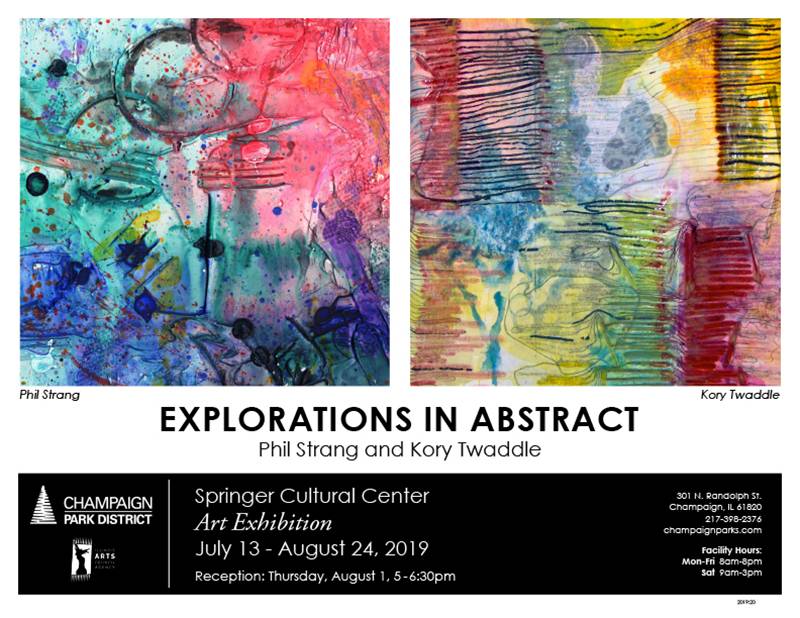From its title, “Explorations in Abstract” could offer a view inside how two artists push and pull at the notion of abstract painting as a genre. If read another way, it could also examine the ways in which two artists, Kory Twaddle and Phil Strang, use that genre to portray the notion of exploration itself. And after careful consideration of my time spent with the work this week, my verdict is that it is both. And while the cerebral nature of the latter requires work on the part of the viewer (attention to titles and careful reading of artist statements), the fomer is pure play; bright, tactile, and almost childlike in its energy. On first glance, walking down the Springer Cultural Center corridor, it may seem somewhat simplistic. But there are layers to explore if you take the time.
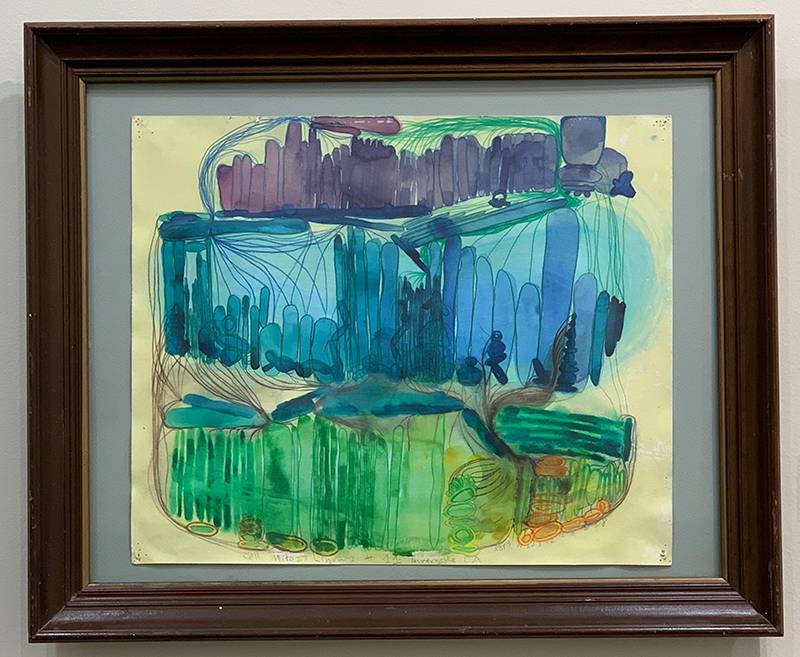
© Kory Twaddle, Cell Mitosis Library #11, Watercolor
As I sorted through my reactions, first to the work itself, then to the work contextualized titles, materials listings, and, most significantly, artist statements, I was reminded of the first group show I participated in. One artist, who had prepared the mounted title cards and artist statements, had been home sick and was desperately trying to make his way to the show before it opened. The early birds beat him to the worm, and we opened the doors with walls of untitled, non-contextualized art. Viewers walked through the show, anxioulsy noticing the absence of these standard cues, but going with the flow, they rose to occasion, and seemed to stay longer, work harder to get at what the work was about. About 30 minutes into the show, the title cards etc. arrived (as did the fallen artist), and were (somewhat) discretely posted. Without fail, the viewers took a second round through the show, anxious to see if there initial impressions matched the artists’ intentions. If I had known this would happen I would have prepared a focus group. The results would have been fascinating.
My point here is this. Everything exists within a context (or ten). The artist’s intention is an important one, albeit not the only one. For this particular exhibit, and especially for Kory Twaddle’s work, knowing the backstory is key. It opens a point of entry into the work. And while it does guide your eye and your meaning making, it does so thoughtfully and intelligently. She challenges you to abstract out of traditional notions of exploration and journeying. More about this in a moment.
Phil Strang, a solid fixture of our local art community, shows us a selection of his bolder, more highly textured abstracts. Though I am familiar with the artist and his work (and have written about him here), this show provided me with an important piece of his backstory, one that was deeply contextual.
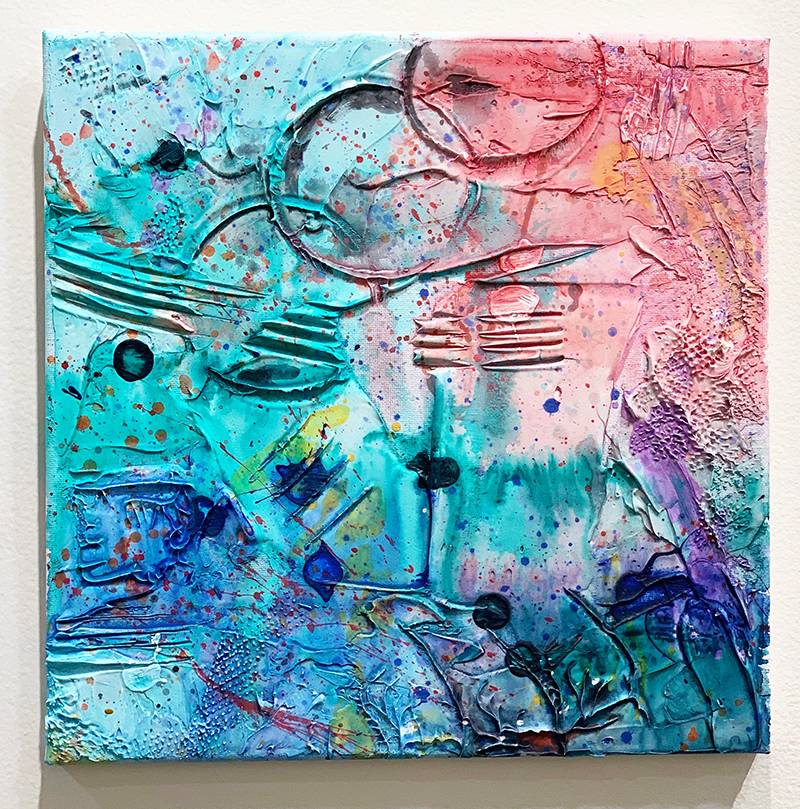
©Phil Strang, Lost in Paradise
Several years ago, a tumor on the optic nerve of his left eye was successfully removed. However, it left Strang 70% blind in his left eye. As a result, he stepped away from his more realistic style and embraced post abstract-expressionist-surrealism (his label, not mine). Knowing this is significant. It represents a purposeful change in the artist’s style and materials, and purpose. Plus, it’s inspiring to see an artist take an obstacle and turn it into opportunity.
Strang’s pieces read differently in person than they do in photographs. It is hard to do justice to the chunky textures of the mediums. In person they do “feel” like (I admit I did want to touch them but didn’t) terrain, new terrain bearing fresh tracks. Many of Strang’s titles also guide us in the direction of exploration and remappping (e.g., Continental Divide, Detour, End of the Road, and Lost Paradise)
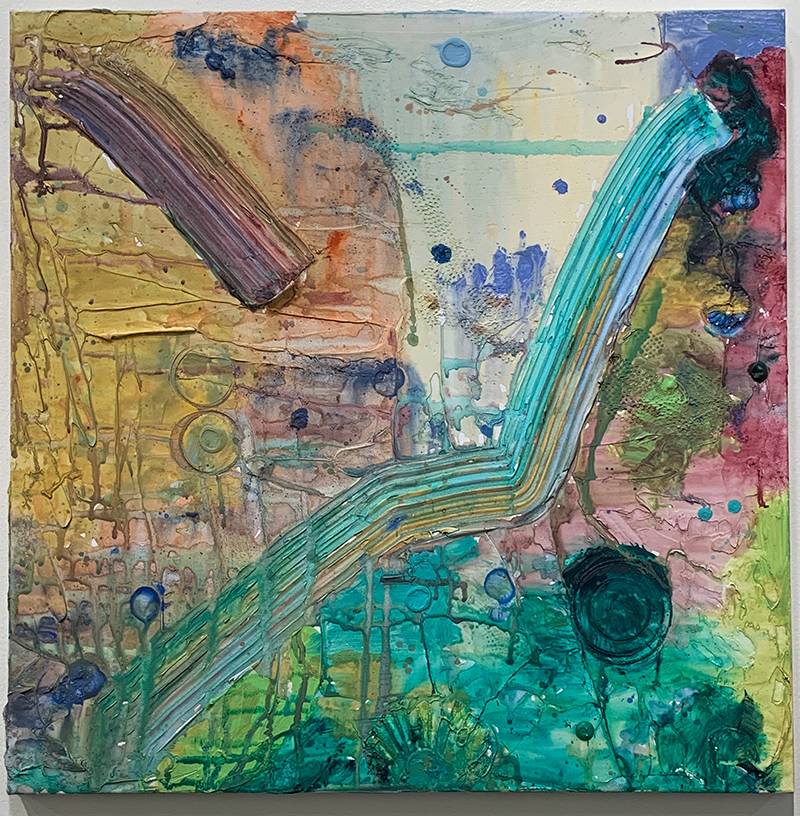
Kory Twaddle, who holds a Master of Fine Art in Interdisciplinary Studio Art and Theory from the Maine College of Art, has long been interested in proprioceptive biograms (rough translation: mapping our movements and interactions). And while her language and references may make her seem overly cerebral, her work is deeply personal, often autobiographic. On her website her notes that her “biograms are records of the lived moment, of specific periods of time and particular spaces, of my own life.”
“They consider how I move through and between familiar spaces such as my studio, home, and workplace, as well as how places and routes change me. They present the body and its innards in an abstracted and somewhat playful way in efforts to examine how the body and the spaces it inhabits are intertwined both in reality and as conceptual architectures in the imagination.”
And if you happen to be a language geek like me, you might enjoy knowing that the term biogram comes from the world of biofeedback training and, according to psychologydictionary.org, refers to “a pattern of events which need to be learned. It may be introduced as a conscious memory device at first, and then become a subconscious behavior pattern through repetition.”
As we walk through the exhibit, we follow Twaddle’s pathways to the Kansas City Zoo. There are several biograms exploring this journey, and how the path changes when we travel with others versus when we travel alone. A signfiicant metaphor that was not lost on me.
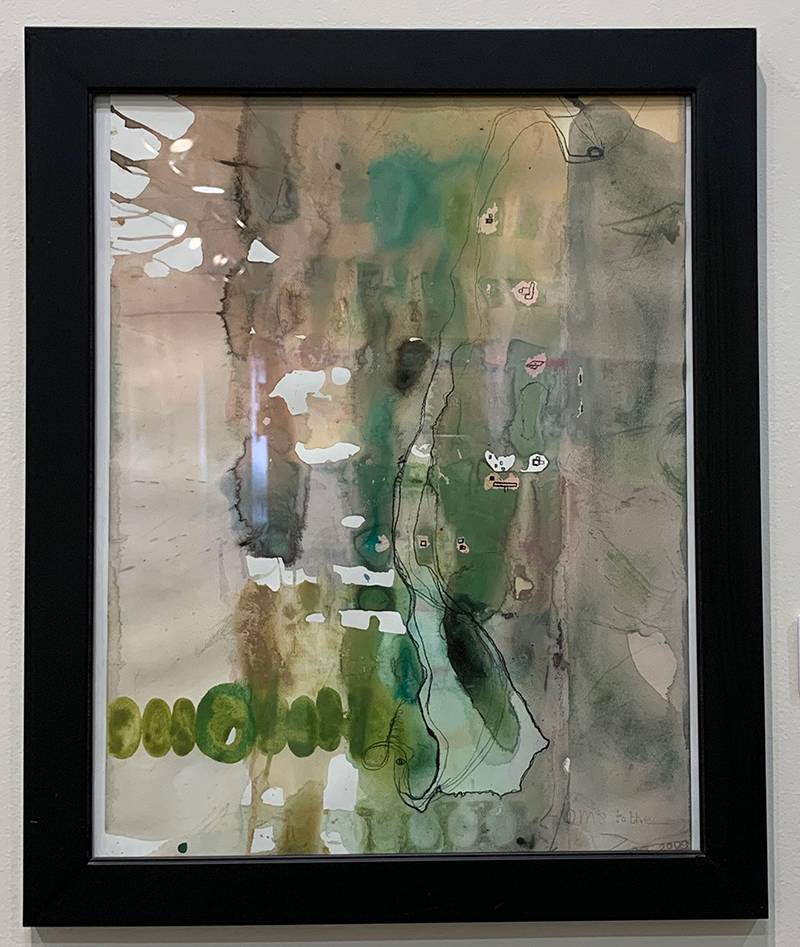
©Kory Twaddle, Biogram to the Zoo
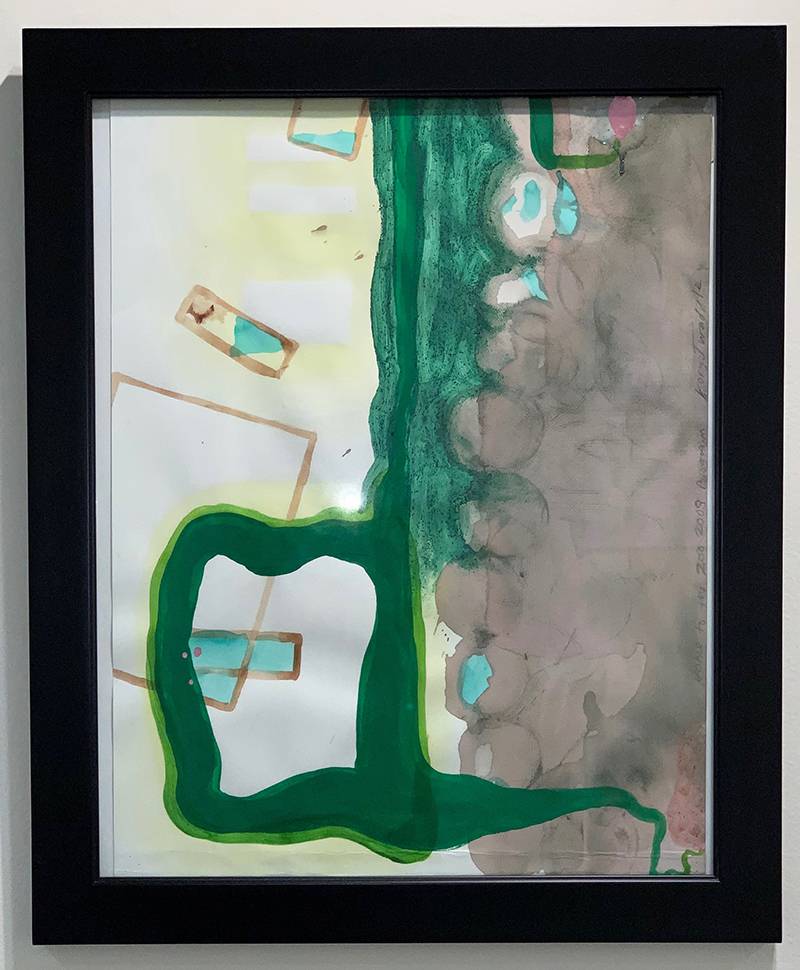
©Kory Twaddle, Driving to the Zoo with Amanda Biogram, Zoo Parking Lot
Finally, a word about materials. Twaddle makes good use of a variety of non-traditional materials/found objects, pushing the envelope on our defintions of art. The tools and the materials are often elevated to subject; touchstones left along the artist’s path to discovery. The details below were of particular interest (and delight) to this writer, and I share them as motivation to see this work in person. I warn you, you will want to touch this work, but please resist.
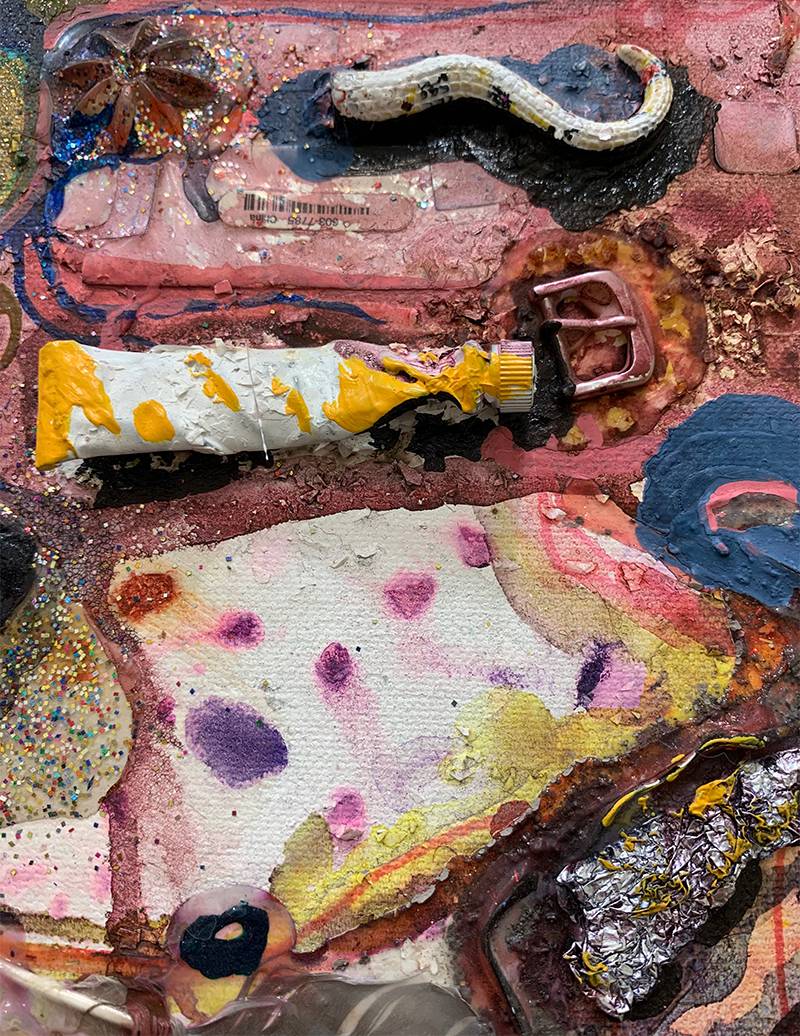
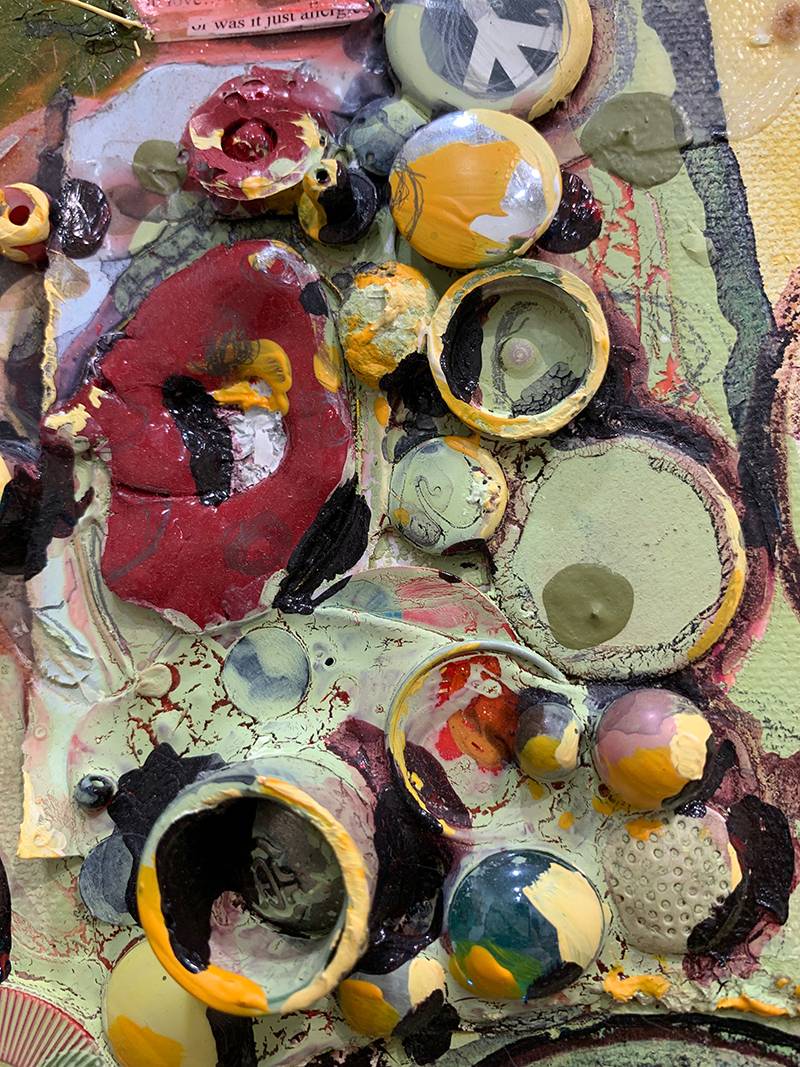
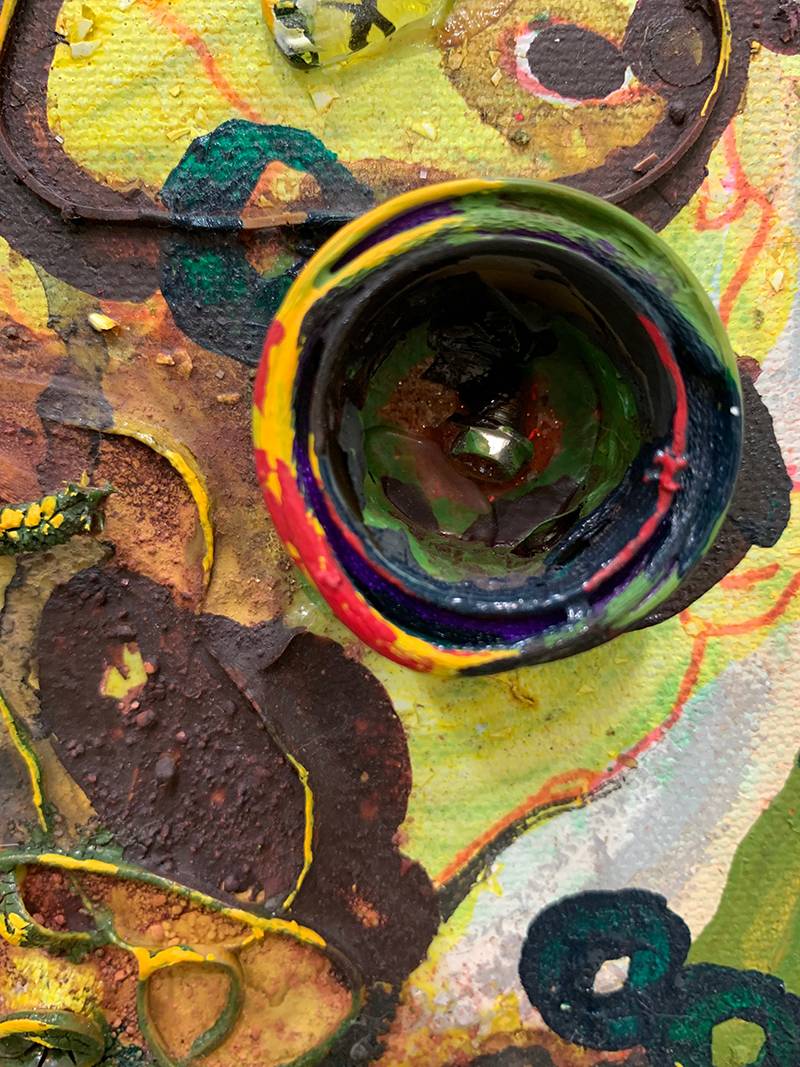
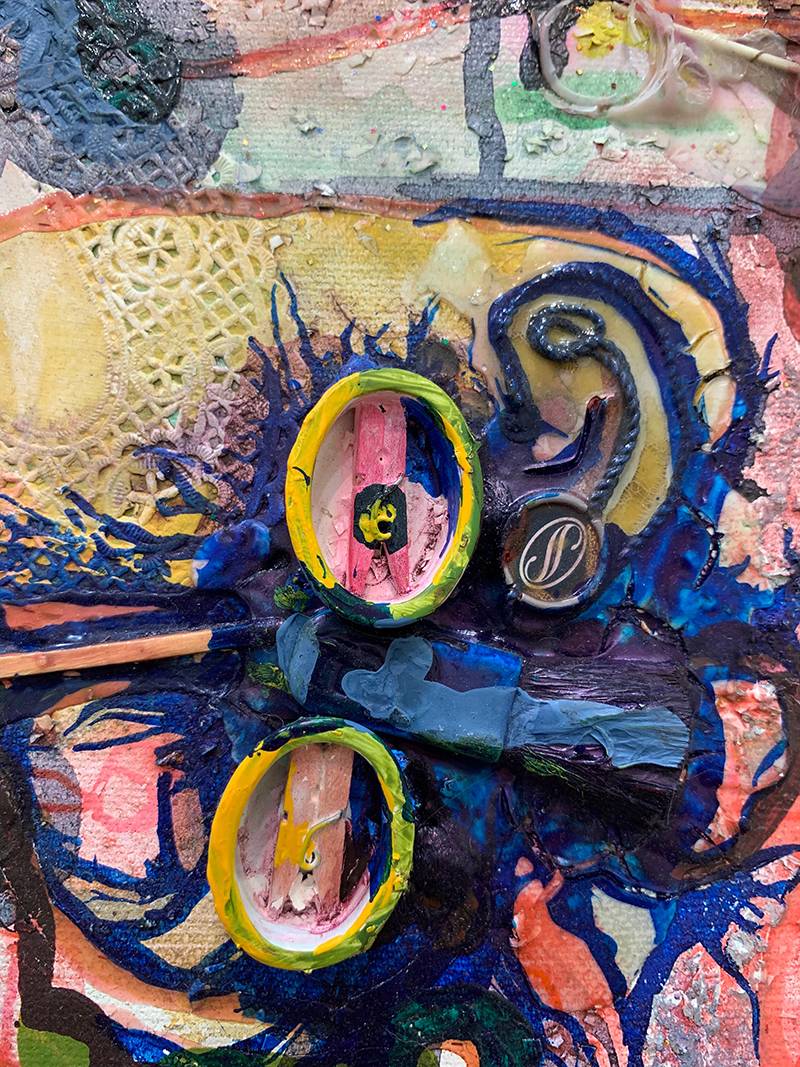
© Kory Twaddle, Details from Brookside Biogram’s #1, #2, #3
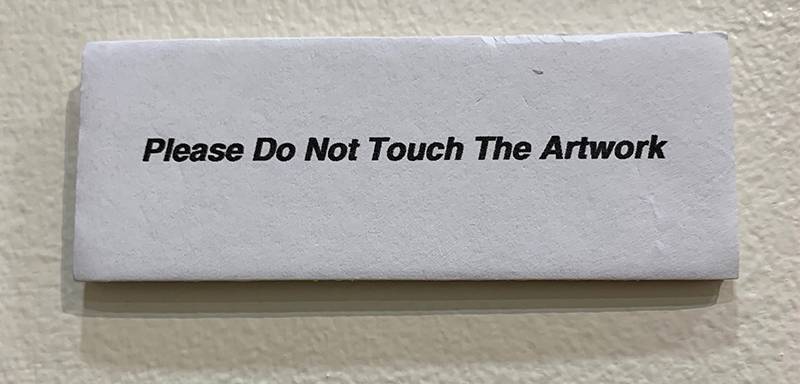
If these highlights from the show have caught your interest, do stop by the August 1st artist reception to engage with the artists (and the art) yourself.
Learn more about Kory Twaddle here, and Phil Strang here.
Explorations in Abstract: Phil Strang and Kory Twaddle
Champaign Park District Springer Cultural Center
301 N Randolph St, Champaign
July 13th through August 24th
Artist reception on August 1st, 5 p.m. to 6:30 p.m.
Top image of exhibit postcard courtesy of the artists. Third photo of Phil Strang’s “Lost Paradise,” is from the “Explorations in Abstract” Facebook event show. Additional photos from Debra Domal








